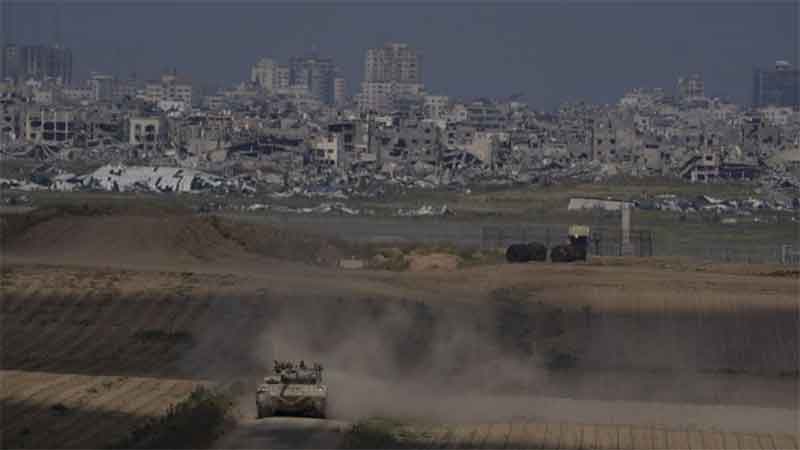
Two large blobs of dust blown off of Africa’s Sahara Desert – which some experts say could be the biggest and most intense Saharan plume in 50 years – are on their way to North America, driven by the same high-pressure system that pushes hurricanes across the same route. The largest is already over the Gulf of Mexico and parts of Florida. The second is in transit in the deep Atlantic. It has already began to affect air quality in Florida, sparking warnings to people with respiratory illnesses to stay home. Air quality in Miami is currently “moderate” the city’s health department said, asking people with respiratory problems to stay home.
The massive plume of dust is expected to blanket parts of the southeastern U.S. this week. Forecasts project that the dust cloud stretching thousands of miles could swirl into the Gulf of Mexico and waft over Texas, Louisiana and elsewhere in the southeast U.S. in the coming days.
The year has brought a pandemic, murder hornets, record high temperatures, the threat of a wild hurricane season to the U.S., and out-of-control forest fires and locusts in other parts of the world.
But while the two dust clouds are big, they are not apocalyptic, said Bob Oravec, senior branch forecaster at the U.S. Weather Prediction Center. “This is a common occurrence in the summer time, especially when there is a big high pressure system in the Atlantic,” Oravec said. “It tends to push the Saharan dust off Africa.”
There are currently no quality alerts in the U.S. because of the dust. But the current clouds are the most intense since 2002, when technology first allowed science to closely monitor these disturbances, said Dan Kottlowski, a meteorologist with AccuWeather Inc. in State College, Pennsylvania.
This year’s activity came about because the east African jet stream has been highly energetic, touching off more storms that caused the dust to swirl as high as 20,000 feet into the atmosphere, he said.
The high-pressure system that pulls the dust into the Atlantic spins clockwise around the basin, which means that disturbances that originate in Africa will regularly move westward toward North America.
The Atlantic hurricane season has already had a quick start with four storms named and two tropical storms hitting the U.S. Forecasters are almost unanimous that the rest of the season, which peaks between late August to early October, will be extreme.
The intensity of the dust could also be another indicator of that, Kottlowski said. The active jet stream is adding to more intense storms, and when the conditions are right later in the summer that could help fuel hurricane season, he said.
The health impacts could be deadly
The enormous dust cloud could aggravate health problems, including asthma and other respiratory illnesses, and make visibility difficult on the ground.
“Dust particles are what we call particulate matter, and we know that breathing in fine particles of anything is not good for the respiratory tract — especially people who are sensitive to poor air quality,” said Thomas Gill, a professor of geological sciences at the University of Texas at El Paso.
The added dust pollution may be particularly problematic in light of the coronavirus pandemic, because COVID-19, the disease caused by the virus, is a respiratory illness.
“There is some emerging information that people who live in places with higher levels of air pollution may be at higher risk” of COVID-19, said Gregory Wellenius, a professor of environmental health at the Boston University School of Public Health. “There may be potential interactions between air pollution and COVID symptoms or progression, but it’s still pretty early data.”
The potential health impacts of the dusty air could put more pressure on the U.S.’s overburdened health care system, Wellenius said.
“Things like the wildfire season, hurricane season and extreme weather events, including this dust storm, may be magnified this year because resources are already stretched thin,” Wellenius said. “Just because we’re in a pandemic world doesn’t mean that other hazards that we tend to worry about aren’t happening.”
Part of the dusty veil has already reached the Caribbean Sea, and thick haze was reported Monday over Puerto Rico, Antigua and other islands in the region.
It is not unusual for dust plumes that originate in Africa to drift thousands of miles across the ocean, but Gill said this event is especially large and intense.
“A dust cloud has to be incredibly large and very thick to be that evident from the space station,” Gill said. “This one literally sticks out like a sore thumb — or maybe like a dirty thumb.”
Astronaut Doug Hurley, who is aboard the International Space Station, snapped a dramatic photo Sunday showing the immensity of the plume over the west-central Atlantic Ocean.
These types of dust clouds occur every year when a mass of very dry air, known as the Saharan Air Layer, forms over the Sahara Desert. The plumes form when “ripples in the lower to middle atmosphere, called tropical waves, track along the southern edge of the Sahara Desert and loft vast amounts of dust into the atmosphere,” Jason Dunion, an associate scientist at the National Oceanic and Atmospheric Administration’s Hurricane Research Division, said in a statement.
Dusty outbreaks in the Sahara typically peak from late June to mid-August, but Dunion said this week’s event is “impressive for its size and the amount of dry, dusty air that it contains.”
When dust clouds waft across the ocean, they are carried by the same trade winds that blow west off the coast of Africa, and they can churn up tropical storms and hurricanes, Gill said.
“It’s all part of the same global circulation of the atmosphere,” he said.
Sahara Air Layer activity coincides with the early part of the Atlantic hurricane season, but the dusty outbreaks typically suppress the formation of tropical storms and hurricanes, which need moisture to develop and thrive.
“That’s the silver lining with these dust clouds,” Gill said. “It has to do with the dryness of the air mass, because you need very, very moist air to create things like tropical storms or hurricanes.”
Gill warned that as the dust drifts over cities and towns, the hazy conditions could trigger air pollution alerts, and he urged people to heed public health advisories.
“It’s important to pay attention to any alerts or warnings from air quality agencies,” he said, “especially for people directly in the path of the dust cloud.”
Sahara dust cloud also looms over Cuba, Caribbean
The massive cloud of Sahara dust darkened much of Cuba on Wednesday.
The dust cloud swept across the Atlantic from Africa over the past week, covering the Caribbean island of Puerto Rico since Sunday and hitting south Florida on Wednesday.
Francisco Duran, head of Epidemiology at the Ministry of Health, said the cloud is likely to “increase respiratory and allergic conditions”.
Weather forecasters for the French Caribbean islands of Guadeloupe and Martinique warned residents that the area was suffering its worst haze in at least a decade.
The density of the current dust cloud over Cuba “is well above normal levels,” said Cuban meteorologist Jose Rubiera.
“The highest concentration over the capital will occur tomorrow,” he said.
According to the Institute of Meteorology, temperatures in Cuba’s eastern province of Guantanamo reached a record for the time of year of 37.4 degrees Celsius on Wednesday.
In Havana, scientist Eugenio Mojena said the phenomenon “causes an appreciable deterioration in air quality.”
Mojena said the dust clouds are loaded with material that is “highly harmful to human health.”
Mojena listed “minerals such as iron, calcium, phosphorous, silicon and mercury” in the dust, and said the clouds also carried “viruses, bacteria, fungi, pathogenic mites, staphylococci and organic pollutants.”
Duran ruled out any link with the coronavirus pandemic.
The Cuba government said its epidemic is under control and last week began to relax quarantine measures, with Havana the only area where restrictions remain because it continues to register infections.
The island reported a single new case on Wednesday, bringing the total number of infections to 2,318, with 85 fatalities from COVID-19.
SIGN UP FOR COUNTERCURRENTS DAILY NEWSLETTER










































